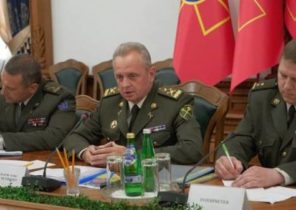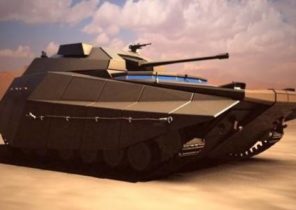
The head of the naval forces of Iran rear Admiral Habibollah Sayar announced a major fleet exercise in February. Exercises “Velayat-95” will be held in the territorial waters of Iran and in international waters of the North Indian ocean. The exercise will be a simulated battle between the ships, tested various types of naval missiles and perfected the use of aerial drones.
The naval plans of Iran closely in the West. Publication Foreign Affairs notes that, in November last year, Iranian authorities unexpectedly officially announced that they are planning the establishment of naval bases in Syria and Yemen that, according to the Iranians, is “ten times more effective than nuclear weapons.”
Base in Yemen would allow Iran to confront Saudi Arabia in the region, to provide the Yemeni Houthis (for the last year and a half, the U.S. Navy prevented a sea of five arms shipments to the Houthis from Iran) and to some extent reduce the willingness of third forces to intervene in the conflict in Yemen. This refers to the USA and shelling by the Houthis delivered from Iran’s missiles, warships of the UAE and the United States Navy in the fall of 2016. Then, the United States struck back on the radar of the Houthis, but in the presence of the naval base of Iran in Yemen, such operations for the U.S. and its allies can be problematic.
Base in Syria will allow Iran to operate in the Mediterranean sea off the coast of Europe and to supply Hezbollah and Hamas directly and not through Iraq or other transit countries.
In addition, the base Iran is necessary because Sudan has closed its ports to Iranian Navy. The last time Iranian ships were officially in Sudan in 2014 and today Sudan is looking more to Saudi Arabia, waiting for generous financial injections and investments from this country. Saudi Arabia and the UAE use ports in Djibouti and Eritrea, thereby establishing its control over the Red sea as a counterweight to Iran. Bases in Syria and Yemen will help Iran to restore the balance of power and strengthen the threat of disruption of oil supplies from Saudi Arabia.
Habibollah Sayar then in November declared that “Iran returns to the sea” and will increase its presence in the Persian Gulf and Gulf of Oman. Moreover, the rear Admiral said that Iran’s Navy will definitely in the near future will be to make sea voyages around Africa, in the Atlantic and in the waters of East Asia, and actively participate in joint naval exercises with the countries of Asia and Africa, to make the ports of these countries.
In 2013, the Iranian ships docked in the ports of China and Sri Lanka, in 2014, the Chinese Navy paid a return visit in the Iranian port of Bandar Abbas, in 2016 the Iranian Navy visited India, Pakistan, Tanzania, and South Africa. In 2017 are planned visits of the Iranian Navy in Russia, Kazakhstan, Turkmenistan and Azerbaijan.
In November, the Iranians said that Iran ships first sailed around Africa and reached the Atlantic ocean, but direct evidence that in addition to visiting the port of Durban in South Africa, the Iranians have gone to the West of Cape Agulhas and really reached the Atlantic, no. The presence of Iranian Navy in the Atlantic is quite a popular topic in Iran. It is being discussed since 2010 at least, and in April of last year, Iran’s chief of army Ataollah Salehi also announced that Iran is ready to send their ships in a “friendly” country in Latin America (Venezuela, Nicaragua, Bolivia, Mexico, Brazil, Ecuador, Cuba and Colombia) to strengthen ties against the “imperialist and colonial forces.”
2014 from time to time there are news that Iran will begin to create their first aircraft carrier, and in December of 2016, the Iranian officials reiterated that they will work on the carrier and on the construction of nuclear submarines and ships.
The geopolitical scope of Iran’s ambitions is impressive. Habibollah Sayar believes that “the Indian ocean is of great importance for the world and for the Islamic Republic of Iran” and that “Iran is able to ensure the safety of the North Indian ocean.”
But former U.S. Secretary of state Henry Kissinger, commenting on the plans of Iran, retorted that it sounds more like a psychological warning to the President-elect of the United States Donald trump, as Iran fears that the trump of relations between the two countries are worse than under Obama.
Western military experts also note that Iran is not banal forces to achieve its naval global plans. In Syria, the Iranian ships visited only twice in 2011 and 2012 following the escalation of the conflict in the country, symbolically indicating that Iran holds a hand on pulse and to the shores of Yemen Iranian Navy never reached during the campaigns in the Gulf of Aden, and in fact never threatened a naval blockade of the coast of Yemen by Saudi Arabia and its allies. To establish a base in Yemen and does sound unrealistic, as attempts to formalize Iran in this country will cause a strong military opposition to Saudi Arabia and the United States.
Experts believe that Iran today is simply not necessary to focus on global Maritime ventures and to expand its presence in the world’s oceans, and the case for Iran, and so, so good directly in their native region, where Iran achieves its geopolitical goals by proxy, successfully using controlled Shiite group in Iraq and Syria, supplying weapons to the Houthis, Hezbollah and Hamas, creates a non-Arab Shiite divisions in Afghanistan and Pakistan for shipment to the war in the middle East.
Anyway, but Iran is seeking to modernize its fleet. In addition to the efforts to manufacture its own species of marine weapons, Iran is considering procurement options, primarily in Russia and China.
In February 2016, the Iranian defense Minister Hossein Dehgan visited in Russia. They discussed the supply of arms from Russia to Iran to the amount of nearly eight billion including the it was about the coast of mobile missile complexes “Bastion”, the Russian frigates and diesel-electric submarines. In November, Iran came the Russian delegation of high-ranking officials and the military, which was headed by the speaker of the Federation Council Valentina Matvienko, to discuss deliveries of Russian arms to Iran. At the beginning of this year we expect the visit to Moscow of Iranian President Hassan Rouhani.
With regard to the naval cooperation between Iran and China, the head of the Iranian Navy Habibollah Sayar paid a visit to China in 2014 in 2015 in Iran was numerous Navy the Chinese delegation, headed by Deputy chief of the General staff of the armed forces of China, Admiral of Navy of China sun Yat-Zzanga, and in November of 2016 to Iran has arrived the Minister of defense of China Chang Wanquan. Priority in the negotiations — cooperation in the naval sphere and the possible purchase of Iranian ships, submarines and missiles from China.







